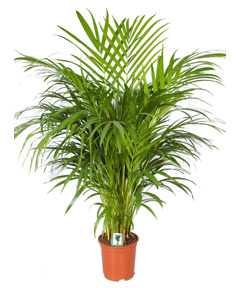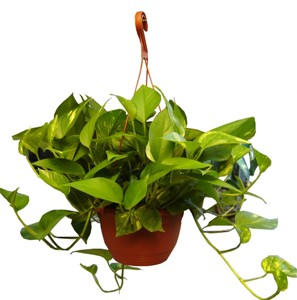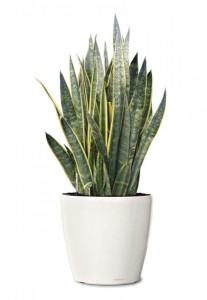 Indoor air pollution is a serious problem, yet nature provides a simple answer. Eliminating indoor air pollution can be as simple as dotting your office with potted plants.
Indoor air pollution is a serious problem, yet nature provides a simple answer. Eliminating indoor air pollution can be as simple as dotting your office with potted plants.It’s a widely held misconception that staying indoors avoids exposure to air pollutants. Indoor air quality, in fact, is usually worse because contaminants that emanate from a vast assortment of consumer products add to the pollution that drifts in from the outside.
Given that office workers spend 30% of their time in the office, any strategy to improve indoor air quality is of widespread interest.
Indoor air chemistry
The chief forms of pollutants generated indoors are known as volatile organic compounds (VOCs) They occur as a gas given off primarily from common petroleum-based products. They’re nearly impossible to avoid since the sources are nearly endless: furniture, carpeting, paints, varnishes, paint strippers, synthetic building materials, air fresheners, cleaning solutions, toilet bowl deodorizers, personal care products, pesticides, and solvents in inks and adhesives. However, non-toxic cleaners that use natural, neutral PH ingredients are available and switching to these can help reduce the negative effect of VOCs on the air in your home.
 The number of VOCs in indoor air is also long, over 800 have been identified. While some pose no known danger to health, others are linked to acute and chronic health effects like asthma, impaired lung function, or damage to liver and kidneys.
The number of VOCs in indoor air is also long, over 800 have been identified. While some pose no known danger to health, others are linked to acute and chronic health effects like asthma, impaired lung function, or damage to liver and kidneys.
Reduce office VOCs naturally
The mainstream approach to lowering VOCs has been to install commercial air filtering devices or room ventilation systems that exchange room air for outdoor air. Both run on electricity, so they increase electric bills and ultimately add to overall atmospheric pollution by way of burning fossil fuels to produce that electricity.
In the humble potted plant, nature has provided a very effective alternative that is affordable and requires no electricity. There are three commonly available and easily grown house plants that can produce all the fresh air needed indoors.

- “The Living Room Plant” Areca Palm (Chrysalidocarpus lutescens).
- “Snake Plant” Mother-in-laws Tongue (Sansevieria trifasciata) Native of Africa.
- “The Specialist Plant” the Money Plant (Epipremnum aureum) Hanging plant.
These plants lower eye irritation by 52%, respiratory symptoms by 34%, headaches by 12%, lung impairment by 24% and asthma by 9%. All this can lead to 20% higher productivity and can reduce energy requirements by 15%, because less outdoor ‘fresh air‘ needs to be cycled into the building.” Improve the air quality of your office and the mental well being of the people who work in it – try some indoor plants.
